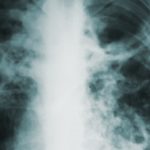What are the ill effects of smoking?
In the United States, premature deaths due to cigarette smoking are more than 400,000 every year. About 40% of smokers die prematurely due to various diseases unless they are able to quit permanently. The death rate increases as age advances.
The harmful, ill effects of smoking have been proven in thousands of clinical studies. It affects every organ system through many of the 4000 chemicals present in tobacco. As many as 40 chemicals are associated with the occurrence of various types of cancer. And finally, it is the nicotine that is responsible for causing addiction. This psychoactive compound affects the central nervous system (brain) by acting on the nicotinic receptors and activating the dopaminergic pathway, which is responsible for the ‘reward system’ of the brain. This results in instant gratification and the person gets into the vicious cycle of ‘smoking nicotine – brain reward – a desire for more smoking’. About 25 % of the nicotine inhaled during smoking reaches blood circulation and gets to the brain within 15 seconds. The half-life of nicotine is about 2 hours.
Ill effects of smoking
Chemicals in cigarettes affect all organs in our body and result in various diseases listed below:
Cardiovascular system (heart and blood vessels) – these are the most dreaded complication seen in chronic and heavy smokers. They include aortic aneurysm (ballooning of large blood vessel), stroke (paralysis), heart attack (death of part of heart muscle), high blood pressure, atherosclerosis (narrowing of blood vessels due to deposition of fat), peripheral arterial disease (reduced blood supply to limbs) resulting in gangrene (black dead part of foot). In addition to causing atherosclerosis, cigarette smoking also increases the risk of heart attack and sudden cardiac death by promoting platelet (sticky cells in the blood) aggregation resulting in blockage of arteries. Reversal of these effects on blood clotting may explain the benefit of quitting tobacco.
Cancers – smoking is related to cancer of the lungs, mouth, larynx, esophagus, stomach, pancreas, kidneys, and urinary bladder. The risk of cancer is directly proportional to the number of cigarettes smoked per day and the duration of smoking in years. A synergistic or additive effect has been found between smoking and alcohol in causing cancer of oral cavity, food pipe (esophagus), and asbestos exposure in causing lung cancer
Respiratory diseases – smoking can cause or aggravate chest problems like chronic bronchitis, pneumonia, chronic obstructive lung disease.
Risk factor for diseases – smoking is a risk factor for many conditions. It is associated with increased ‘bad cholesterol’ (LDL – low-density lipoproteins). It causes migraines due to vascular effects, stomach ulcers due to increased production of acid, tooth and gum disease due to poor hygiene, and the effect of smoke. The other diseases which are aggravated by smoking include acute myeloid leukemia, Crohn’s Disease, osteoporosis, cataracts, age-related macular degeneration (blindness), and low bone density resulting in hip fractures.
Smoking in women – female smokers are prone to cancer of the cervix, menstrual and fertility problems, spontaneous abortion, and low birth weight babies.
Infertility in males – males can suffer from erectile dysfunction (impotence) and infertility due to low sperm count.
Aging – smoking is associated with wrinkling of the skin and premature graying of hair.
Financial effects – smoking is expensive. People with financial constraints, especially adolescents, may find smoking unaffordable. One can calculate the amount of money spent in a year to appreciate its significance.
It is wise to stop smoking, considering the above-mentioned diseases. Quitting is not easy because of cravings, withdrawal symptoms, and frequent relapse. Once convinced or motivated to quit, a chronic smoker can use quitting aids, help from healthcare agencies, and motivational therapy. Prevention of smoking initiation has a significant role and should begin in school.




























